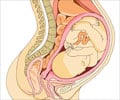The gap in stillbirth rates between indigenous and non-indigenous women is closing in Queensland, Australia.

The Australian study used data from the Queensland Perinatal Data Collection and looked at 881,211 singleton births from 1995 to 2011. It aimed to assess the differences in stillbirth rates over time among indigenous (Australian Aboriginal and Torres Strait Islander) and non-indigenous women based on their location and gestational age.
Of the total number of births, 49,450 (5.6%) were to indigenous women and 831,761 (94.4%) were to non-indigenous women. There were 5,425 stillbirths overall.
The paper found that over the study period, the stillbirth rate for all women in Queensland was 6.2 per 1000 pregnancies. They found that indigenous stillbirth rates decreased 31.9% from 13.3 to 9.1 per 1000 pregnancies while for non-indigenous women the rate was steady around 5.9 per 1000 pregnancies.
Overall, the difference in stillbirth rates between indigenous and non-indigenous women reduced by 57.3%. Moreover, indigenous women living in regional and remote areas experienced greater reductions than women in urban areas.
The researchers looked specifically at geographical location and found that stillbirth rates among indigenous women decreased by 10.2%, 29.2% and 49.9% for women living in urban, regional and remote areas respectively. In comparison, the stillbirth rates for non-indigenous women increased by 0.9% and 11.4% for women living in urban and regional areas and decreased by 39.2% for those in remote areas.
Advertisement
At term (over 37 weeks) the researchers found that indigenous women had an increased risk of stillbirth due to maternal conditions and perinatal infection. For example, indigenous women had a six-fold increased risk of stillbirth due to diabetes, a three-fold increased risk of stillbirth due to spontaneous preterm birth and an increased risk of stillbirth due to hypertension, fetal growth restriction and antepartum haemorrhage.
Advertisement
"This study shows that the gap in stillbirth rates is narrowing between indigenous and non-indigenous women except at term where we identified a number of preventable conditions such as diabetes, infection and fetal growth restriction.
"With the appropriate help and interventions there is an opportunity to further reduce the number of term stillbirths among indigenous women.
"It is vital that there is high quality antenatal care at all levels available for indigenous women which is culturally sensitive and incorporates diabetes management, smoking cessation, STI screening and folic acid supplementation to improve pregnancy outcomes."
John Thorp, BJOG deputy editor-in-chief said:
"This is a very interesting study as it looks at a large number of women over a long time period.
"Stillbirth is devastating for families and it is encouraging to see the gap in rates is closing between indigenous and non-indigenous women. This study furthers our knowledge as it looks at some of the trends and underlying causes of stillbirths."
Source-Eurekalert












